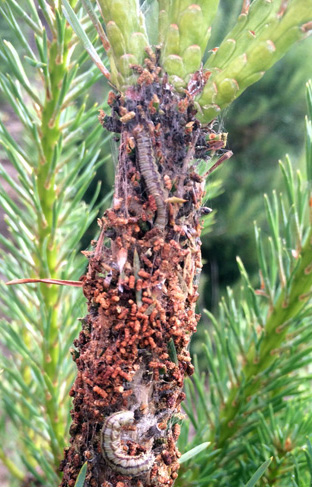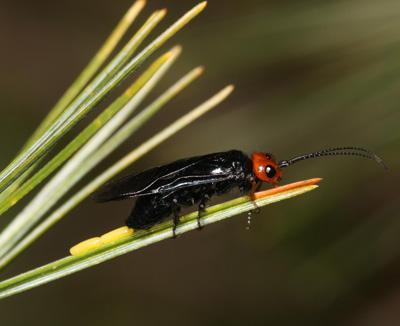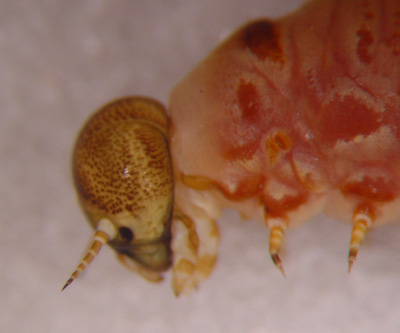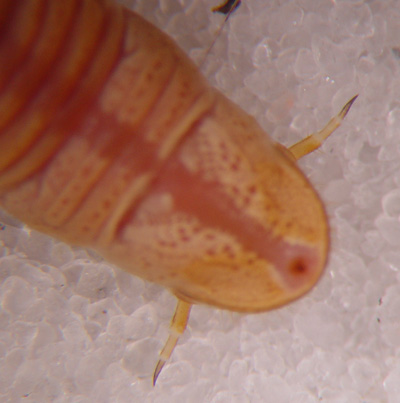Pine false webworms are active in Scots pine
Large numbers of pine false webworm are being found in Scots pine fields in northern Michigan.

Presently, we are finding large numbers of pine false webworms, Acantholyda erythrocephala (Hymenoptera: Pamphiliidae) in Scots pine fields in Michigan’s Kalkaska and Missaukee counties. If you are not actively scouting your fields, these insects can easily go unnoticed. Light infestations can just be unsightly because of the frass-filled nests on the branches. If you are finding just a few, you can clip and destroy the nests. Heavier infestation can remove most of the older needles from the tree and Michigan State University Extension advises growers to apply a registered insecticide as pine false webworms are feeding and building nests.
Pine false webworms are actually a sawfly that feeds on older needles and forms webbed tubes on branches or twigs. Even though they prefer red and white pine, they will feed on Scots pine as well as other pines. This is a European species that was first found in the United States around 1925. It is now found throughout the northeastern United States, upper Midwest and in Canada from Newfoundland west to Alberta. Outbreaks of pine false webworms have occurred in New York and east Canada since its introduction. A tachinid fly parasitoid from its native range in Europe has been released in Ontario.
Pine false webworms overwinter as a cocooned larva, called prepupa, in the ground. In spring, the larvae pupate and adults emerge in late April to early June to lay eggs on the previous year's needles. These eggs hatch in about two weeks. The larvae are green with purple stripes. Younger larvae construct loose webbing along the branch and feed by attaching silk strands to needles, cutting them off and pulling them into the webbing. Young larvae feed gregariously while older larvae are solitary and feed from silken tubes attached to twigs. Brown, barrel-shaped frass pellets and bits of needles stick to the webbing and silk tubes.

Pine false webworm larva on silken tube. Photo credit: Rose Walsh, Dutchman Tree Farm

Pine false webworm. Photo credit: Barry Lyons, Canadian Forest Service, Bugwood.org.

Pine false webworm antenna. Photo credit: Howard Russell, MSU.

Pine false webworm appendages. Photo credit: Howard Russell, MSU.



 Print
Print Email
Email

